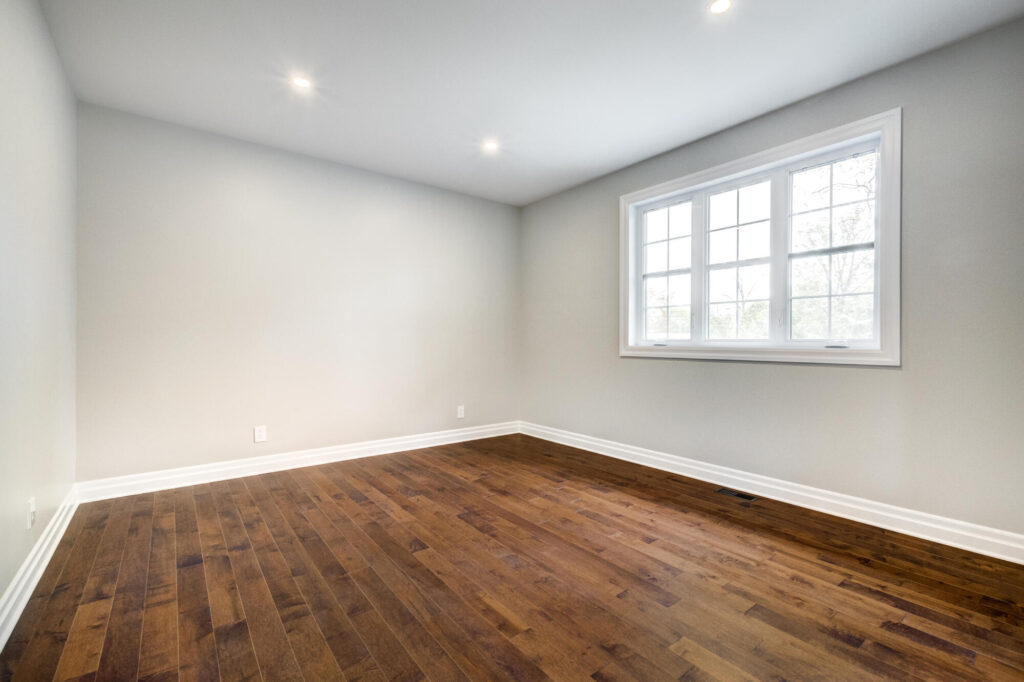Choosing the right hardwood floor for your home is an exciting endeavor. Hardwood floors offer beauty, warmth, and value, making them a popular choice among homeowners. However, with the variety of options available, it can be overwhelming. This article will guide you through the process of selecting the perfect hardwood floor, keeping it simple and easy to understand.
Types of Hardwood Floors
Understanding the types of hardwood floors is the first step in your selection process. Hardwood flooring comes in two main types: solid and engineered.
Solid Hardwood
Solid hardwood is made from a single piece of wood. It’s thick and allows for multiple refinishes over time, making it a long-lasting choice. Solid hardwood is ideal for rooms above ground level where there’s less moisture.
Engineered Hardwood
Engineered hardwood is made from several layers of wood pressed together. It’s more stable than solid wood and can withstand moisture better. This makes it a great choice for basements or areas with changing humidity.
Wood Species Options
The species of wood determines the floor’s look and feel. Here’s a brief overview of popular options:
Oak
A timeless option for hardwood flooring is oak. It features a gorgeous grain pattern and is robust. There are two primary types of oak: white oak and red oak. Both varieties give any space a classic feel.
Maple
Maple hardwood is known for its smooth grain and light color. It’s a great choice for contemporary spaces due to its subtle look and durability.
Cherry
Cherry wood has a rich, reddish-brown color. It darkens with age, developing a warm patina. Cherry floors add elegance and are perfect for formal settings.
Walnut
Walnut offers deep, chocolate-brown tones and a smooth grain. It’s softer than oak and maple, which makes it more prone to dents but provides an exquisite aesthetic.
Consider Your Lifestyle
Your lifestyle plays a crucial role in choosing the right hardwood floor. Here are some factors to consider:
Traffic
Evaluate the foot traffic in each room. High traffic areas like hallways may benefit from harder woods like oak or hickory, which resist wear.
Pets and Children
If you have pets or young children, choose harder species to minimize scratches and dents. You might also consider a lower sheen finish to camouflage marks.
Decide on a Style
The style of your hardwood floor can set the tone for your home. Here are some popular styles:
Traditional
Traditional hardwood floors have a classic look with warm tones and a smooth finish. They’re versatile and fit many interior designs.
Rustic
Rustic floors feature more knots and natural imperfections. They have a casual charm and work well in country or farmhouse-style homes.
Modern
Modern hardwood floors often have a sleek, minimalist appearance. They might feature wider planks and lighter or bleached finishes for a contemporary vibe.
Finish Options
The finish of your hardwood floor affects both its appearance and how it performs over time.
Polyurethane Finish
Polyurethane is a popular finish that offers excellent protection. It comes in various sheens, from glossy to matte, and is ideal for high-traffic areas.
Oil Finish
Oil finishes penetrate the wood, enhancing its natural beauty. They require more maintenance than polyurethane but are easier to touch up.
Consider Color and Texture
The color and texture of your floor significantly influence the look and feel of your rooms. A warm-toned wooden floor can create a cozy and inviting atmosphere, while sleek tiles might give a modern, clean vibe. Choosing the right combination can enhance your overall interior design, impacting the mood and aesthetic of your living space.
Light vs. Dark
Light floors can make a room feel larger and more open. They show less dust and pet hair. Dark floors add richness and contrast but can make a space feel smaller.
Smooth vs. Hand-Scraped
Smooth floors have a clean look, while hand-scraped or distressed textures add character and hide imperfections.
Budget Considerations
Budget is a significant factor in choosing hardwood flooring, as it determines not only the type of wood and finish you can afford but also influences the overall cost of installation and long-term maintenance. Different types of hardwood, such as oak or maple, come at varying price points, so it’s important to balance quality with affordability. Additionally, considering the durability and lifespan of the flooring can help you make a more cost-effective decision in the long run.
Initial Cost
Consider the cost of the materials and installation. Solid wood is usually more expensive than engineered wood. Exotic species are costlier than domestic wood.
Long-Term Investment
Think about the long-term value. Hardwood may be more expensive upfront, but it adds value to your home and can last for decades.
Installation and Maintenance
When planning for a project, consider the various installation methods and the associated maintenance requirements. It’s important to evaluate the tools and resources needed for flooring installation, as well as the frequency and type of maintenance required to ensure long-term functionality and efficiency.
DIY vs. Professional Installation
Engineered wood might be easier for DIY installation, while solid wood often requires professional installation.
Care and Maintenance
Regular sweeping and occasional refinishing keep hardwood floors looking new. Follow manufacturer recommendations for cleaning.
Environmental Impact
Environmental considerations, such as the impact on local ecosystems and the carbon footprint, may also influence your choice. Taking these factors into account can lead to more sustainable and responsible decision-making.
Sustainable Options
Look for products certified by organizations like the Forest Stewardship Council (FSC). Reclaimed wood is another eco-friendly option.
Low Volatile Organic Compounds (VOC)
Opt for finishes with low VOC (volatile organic compounds) levels to significantly enhance indoor air quality. These compounds can contribute to air pollution and potential health issues, so selecting low-VOC options helps create a healthier living environment by reducing exposure to harmful chemicals.
Exploring Alternative Flooring Options
While hardwood floors are a popular choice, exploring other types of flooring can reveal versatile and practical alternatives. Among these are marley floors, often chosen for dance studios and art spaces due to their durability and slip-resistant properties. Marley floors offer a smooth, resilient surface that is easy to maintain and adaptable to various performing arts needs.
Their installation can transform any space into a professional environment, enhancing both safety and performance for dancers and athletes alike.
Making the Right Choice for Your Home’s Hardwood Floor
Choosing the right hardwood floor for your home involves considering types, species, styles, budgets, and more. With this guide, you can confidently select a floor that suits your taste and lifestyle, adding beauty and value to your space.
For more on this content, visit the rest of our blog!







